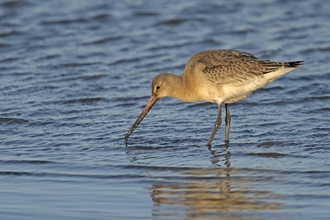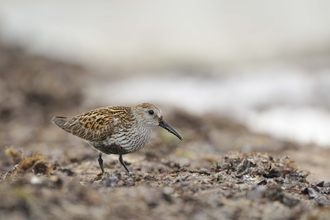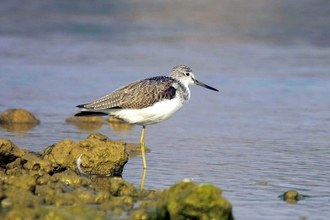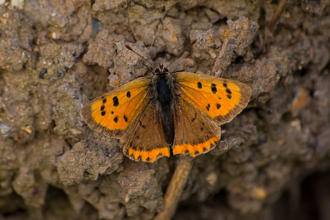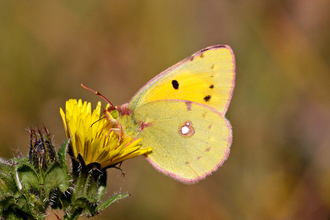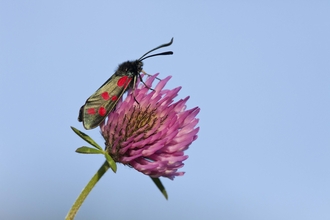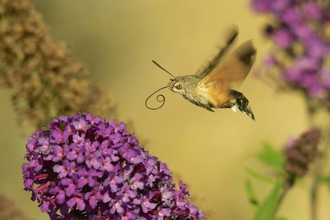At this time of year I start to look out for passage migrants. Waders which have bred in the north are returning to their wintering grounds, and just about anything can turn up on our wetland sites. Small numbers of common sandpiper breed in the county, but many more pass through. Wood sandpipers are now seen regularly, with the peak of their passage in mid-August, and green sandpipers peak towards the end of the month. Watch out too for ruff, godwits and dunlins, whimbrel, ringed plover, greenshank and occasional spotted redshank, Temminck’s stint and pectoral sandpiper. Places to look include Venus Pool, Wood Lane, Chelmarsh, and, of course, from the lovely new hide at Charles Sinker’s Fields in Whixall.
Dr Cath’s Nature Notes – August
Our breeding swallows, martins and swifts will be gathering in large flocks ahead of their own migration. Swifts will soon be departing, but the hirundines are usually with us a little longer, and may still be feeding second broods. Some adults and the fledged young from first broods will be beginning to line up on telephone wires, though.
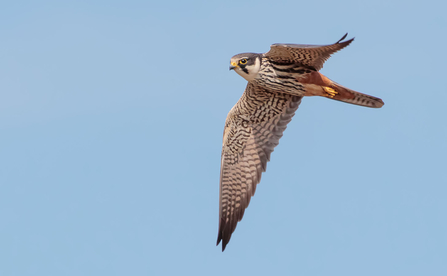
Hobby (c) Stephen Barlow
It’s a good chance to watch for opportunistic hobbies – these slim moustachioed falcons are expert predators of this group. I’ve seen them sweeping along the lane outside the cottage where the swallows mass on the wires, though I never see one near here earlier in the year. A mob of swallows usually manages to see them off!
Butterflies to watch out for this month include dark green and silver-washed fritillaries, purple hairstreak and white –letter hairstreak, small copper, brown argus and grayling, as well as possible migrants such as painted ladies and clouded yellows. Try Llanymynech and Llynclys Common for a chance of seeing most of these species. For purple hairstreaks, Bury Ditches near Clun is recommended, but take your binoculars – they congregate round the top of oak trees. In the garden, peacocks and red admirals are frequent, and on country walks you should find gatekeepers, walls and ringlets.
Day-flying tiger moths and burnets are on the wing in August, and if you’re very lucky, it might be a good year for hummingbird hawk moths, a migrant species which sometimes visits in large numbers and may be attracted to brightly coloured garden plants – they seem to like fuchsias in my garden.
If flowers are more your ‘thing’, some of the later flowering orchids are worth seeking out. The ash woods on limestone at Wenlock Edge host violet, broad leaved and narrow lipped helleborines and lesser twayblade, all of which flower at this time of year. You might catch the last of the rather distinctive herb paris too, with its black berry-like fruit held above the broad whorl of four leaves.
It is traditional to start collecting whinberries (also known as whortleberries or bilberries) on the first Sunday in August, the first wild fruits for foragers. Arm yourself with a tub, get out onto the high moorland and gather yourself a delicious treat! The taste is much more intense than bought blueberries and they’re good for you too – full of vitamins A and C, and antioxidants. Free superfood!
Trish Fox
The small berries grow on low bushes and can be fiddly to pick. In Sweden they use a berry-picking gadget with a rake of wires bent into long u-shapes at the front and a collecting box behind, but if you haven’t got one, a broad-toothed detangling comb works well with a tub to catch the berries as they fall. Children are brilliant whinberry pickers, being lower to the ground – the only difficulty is ensuring enough berries go into the tub as well as into little mouths! Good foraging grounds can be found on the Long Mynd and Stiperstones, and there’s lots of other wildlife to enjoy while you have a well-earned break from harvesting. Watch out for emperor and fox moth caterpillars among the heather, lizards, red grouse, ravens and red kites, and allow the big skies and wide landscapes to inspire and uplift you. A perfect day out!


